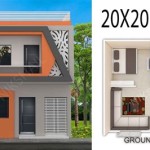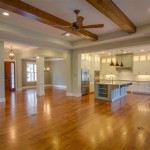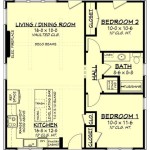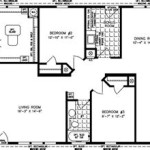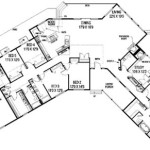Small Mother-in-Law House Plans: A Practical Guide for Multigenerational Living
The concept of multigenerational living is steadily gaining traction, with families seeking ways to bridge the gap between generations and create a sense of community within their homes. One popular solution is the construction of a small, detached mother-in-law house, also known as an accessory dwelling unit (ADU), on the same property as the main residence. This approach offers flexibility, privacy, and a sense of independence for both parties while fostering a close familial bond.
Designing a small mother-in-law house requires careful planning, considering factors like size, layout, and functionality, all while prioritizing comfort and accessibility. This article delves into the essential aspects of designing a small mother-in-law house, addressing key considerations and providing insights into making the most of limited space.
Considerations for Small Mother-In-Law House Plans
Before embarking on the design process, it's crucial to carefully consider the needs and preferences of all parties involved. This includes understanding the specific requirements of the individual who will be residing in the mother-in-law house, as well as the overall vision for the property. This ensures that the final design aligns with the intended purpose and fosters a harmonious living environment.
1. Space Utilization and Functionality
The primary challenge in designing a small mother-in-law house is maximizing space utilization while ensuring functionality. The layout should be designed to optimize flow, minimize wasted space, and create a sense of spaciousness. Consider incorporating space-saving features like built-in shelves, Murphy beds, or a combination of living and dining areas. The kitchen should be well-equipped, with efficient appliances and ample storage. A compact bathroom can be maximized through smart storage solutions and a walk-in shower.
2. Accessibility and Comfort
Accessibility is paramount for a comfortable living experience. If the intended resident is elderly or has mobility challenges, consider features like wider doorways, grab bars in the bathroom, and a ramp instead of stairs. Prioritize the use of non-slip flooring and well-lit spaces to prevent accidents. The design should also incorporate features that promote comfort, such as a cozy living area, a private outdoor space, and ample natural light.
3. Design Aesthetics and Style
The exterior and interior design of the mother-in-law house should complement the main residence while reflecting the resident's personal style. Consider using materials and colors that create a cohesive aesthetic and enhance the overall appeal of the property. The interior design can be tailored to create a welcoming and inviting atmosphere with comfortable furniture and carefully selected decorative elements.
Key Considerations for Small Mother-In-Law House Plans
The design and construction of a small mother-in-law house involve several key considerations that directly impact functionality, comfort, and overall appeal. Here are some crucial aspects to address during the planning phase:
1. Size and Dimensions
The size of the mother-in-law house will vary based on individual needs and local regulations. In most cases, these units range from 400 to 800 square feet, providing sufficient space for a bedroom, bathroom, kitchen, and living area. It's essential to consider the minimum size requirements in your area, ensuring that the unit meets local building codes and zoning regulations.
2. Layout and Flow
A well-considered layout enhances functionality and promotes a comfortable living experience. Consider an open floor plan to maximize space and create a sense of openness. The kitchen, living area, and bedroom should be strategically positioned to ensure efficient flow and minimize traffic patterns. Adequate storage space is crucial for keeping the unit organized and clutter-free.
3. Energy Efficiency
Energy efficiency is a critical factor that impacts the overall cost of living. Consider incorporating energy-saving features like solar panels, high-performance windows, and efficient appliances. Employing insulation and proper ventilation techniques can further enhance energy savings and reduce environmental impact.
4. Building Materials
The choice of building materials significantly impacts the durability, aesthetics, and cost of the mother-in-law house. Consider using sustainable and eco-friendly materials that are also durable and maintain their appearance over time. Options like recycled wood, bamboo, or low-VOC paints can contribute to a healthier and more environmentally conscious living environment.
Conclusion
Small mother-in-law house plans offer a practical and flexible solution for multigenerational living, providing a comfortable and independent space for family members while fostering a sense of community. Careful planning, consideration of individual needs, and adherence to building codes are crucial for creating a successful design that meets the needs of all stakeholders. By incorporating space-saving techniques, prioritizing accessibility and comfort, and considering energy efficiency, you can create a small mother-in-law house that is both functional and aesthetically pleasing.

Small Mother In Law Suite Floor Plans Home Design Cottage Apartment

Mother In Law National Home Builders

870 Best Mother In Law Cottage Ideas 2024 Small House Plans Floor

22x24 Guest House Plan Tiny In Law Apartment

Mother In Law Apartment House Small Plans

Designing And Building New Homes With Mother In Law Suites David Weekley

Homes With Mother In Law Suites

Mother In Law Suites Small House Floor Plans Cottage Farmhouse

Designing And Building New Homes With Mother In Law Suites David Weekley

Mother In Law Suite Floor Plans Basement House

